Preservation Tip -- Deodorizing Large Format Paper
To deodorize extremely musty-smelling large format architectural drawings, we used Gonzo Odor Eliminator that we ordered through Amazon for $9.99 per bag. The product is described as being an “all-natural” and “volcanic” substance that attracts and holds odors. The biggest challenge we faced was both the intensity of the odor (the result of long-term storage in an outdoor container) as well as the large size of the materials that would not fit into a smaller, sealable container for deodorizing.
The product arrived in a mesh bag. The material inside appears to be chunks of grayish white pumice and finer particles of grit—finer than beach sand but not airborne— that filtered out.
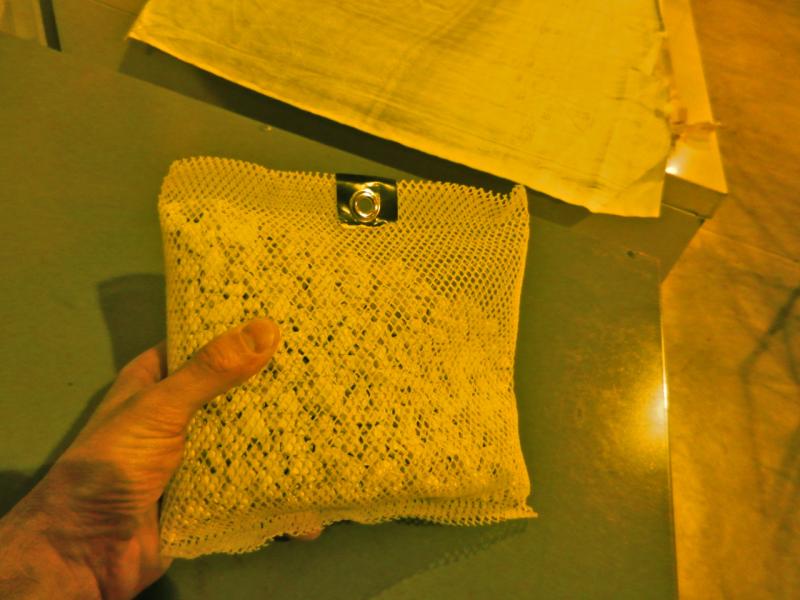
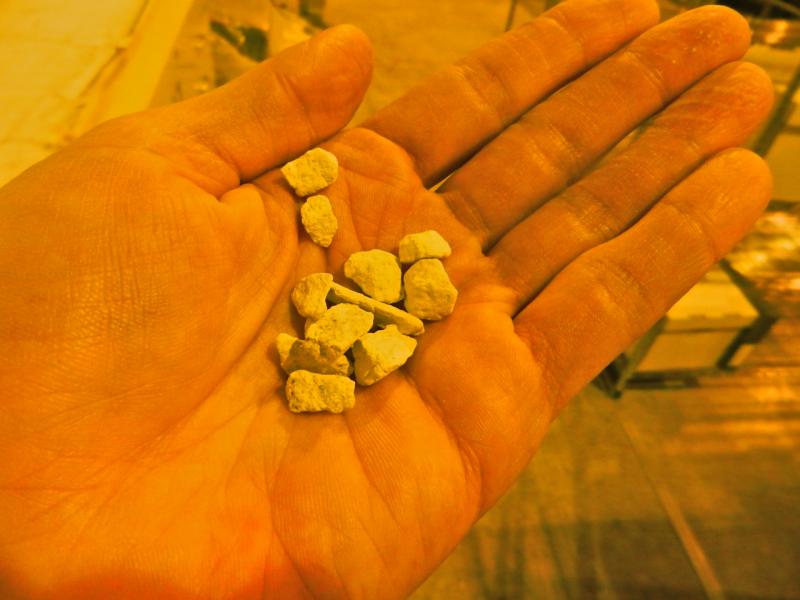
I opened the bag (contrary to instructions on the label) and spread the material out onto a flat file drawer that I had lined with plastic. On top of the material I placed a clean, white cotton sheet as a barrier between the pumice material and the archival materials. I then placed the foldered drawings on top of this sheet and closed the drawer.
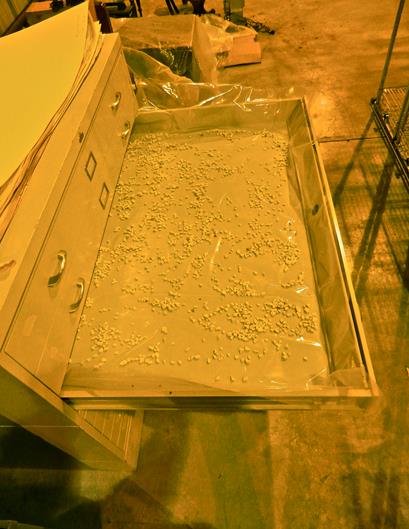
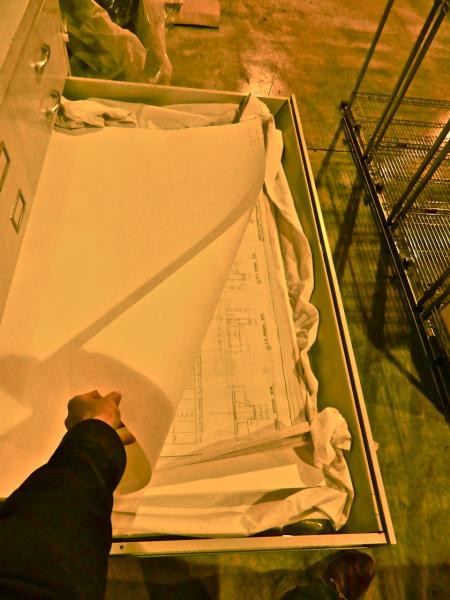
In the cleaning and processing area where materials were being vacuumed, flattened, and foldered, I set up an additional deodorizing station. I placed a bag of Gonzo beneath a plastic pallet. I then placed rolled, unprocessed materials onto the pallet and wrapped the entire pallet in plastic to create a chamber effect.
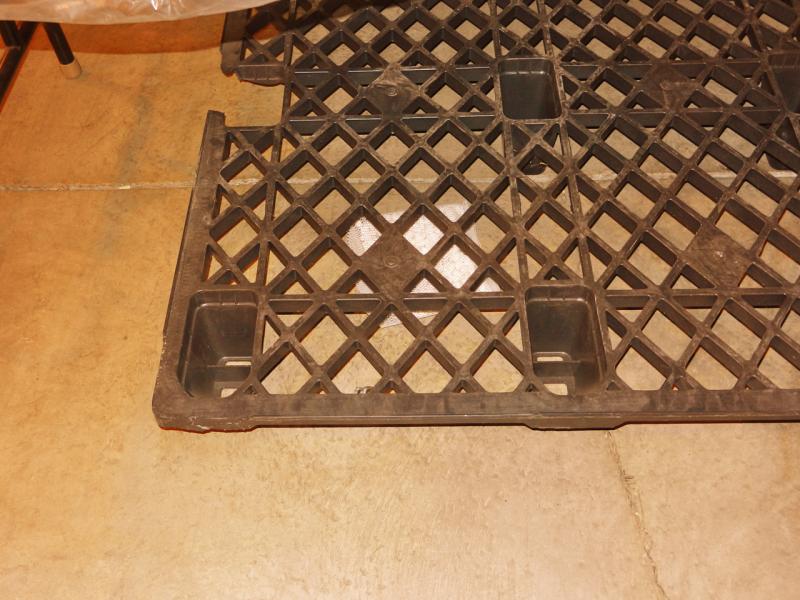
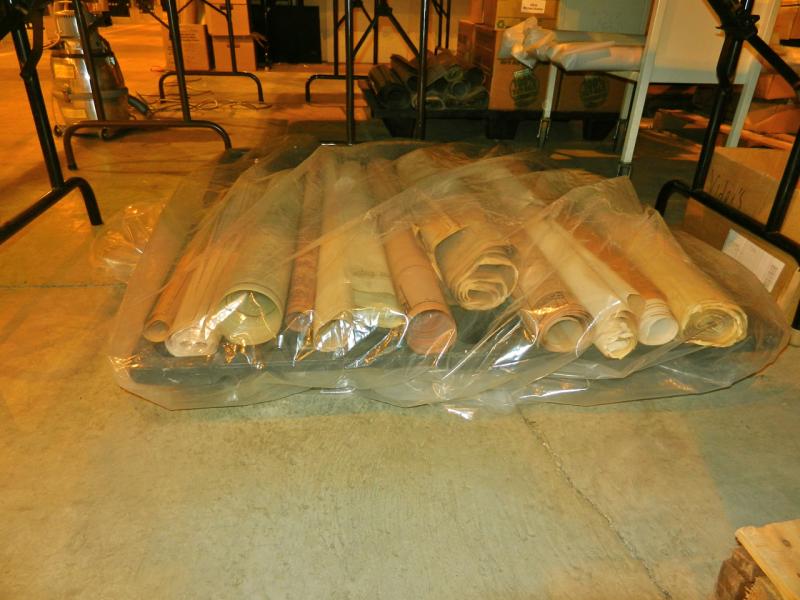
Results:
After 4 weeks of deodorizing, the paper materials in both deodorizing stations were nearly odorless. Even tightly rolled items were dramatically improved, while the cleaned, flattened items were almost entirely odorless. I anticipate that within another few weeks, the odor may be entirely gone.
Risks:
The biggest risk with the Gonzo material seems to be its abrasiveness. Merely handling the stones abraded the skin on my hands, rather like a pumice stone used in the bath. The stones and the fine grit that that accompanied them would certainly abrade archival materials they came into direct contact with, and it could be quite destructive to film, magnetic tape, or any machines or computers. To prevent migration of this material, we are strictly limiting its use to two small areas of the archives space—the large-format processing area and the one set of flat files.
Next steps:
The material does apparently need to be “recharged” after a time—the manufacturer recommends placing it outdoors in the sun for several hours which I will do sometime over the summer. Using plastic to line the flat file drawer will (hopefully) make removing the stones easy.
Ross Griffiths, Illinois State University, May 2014.

